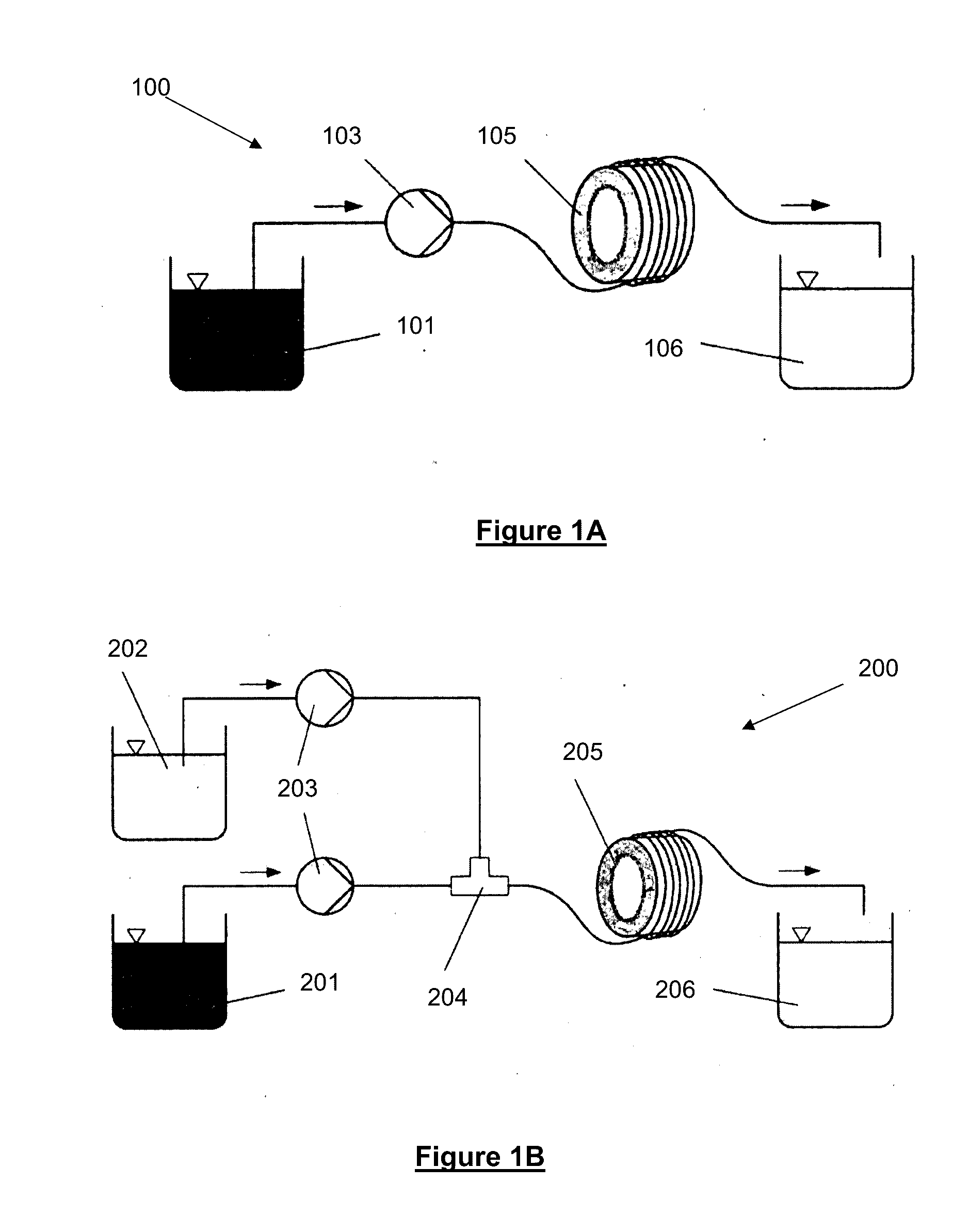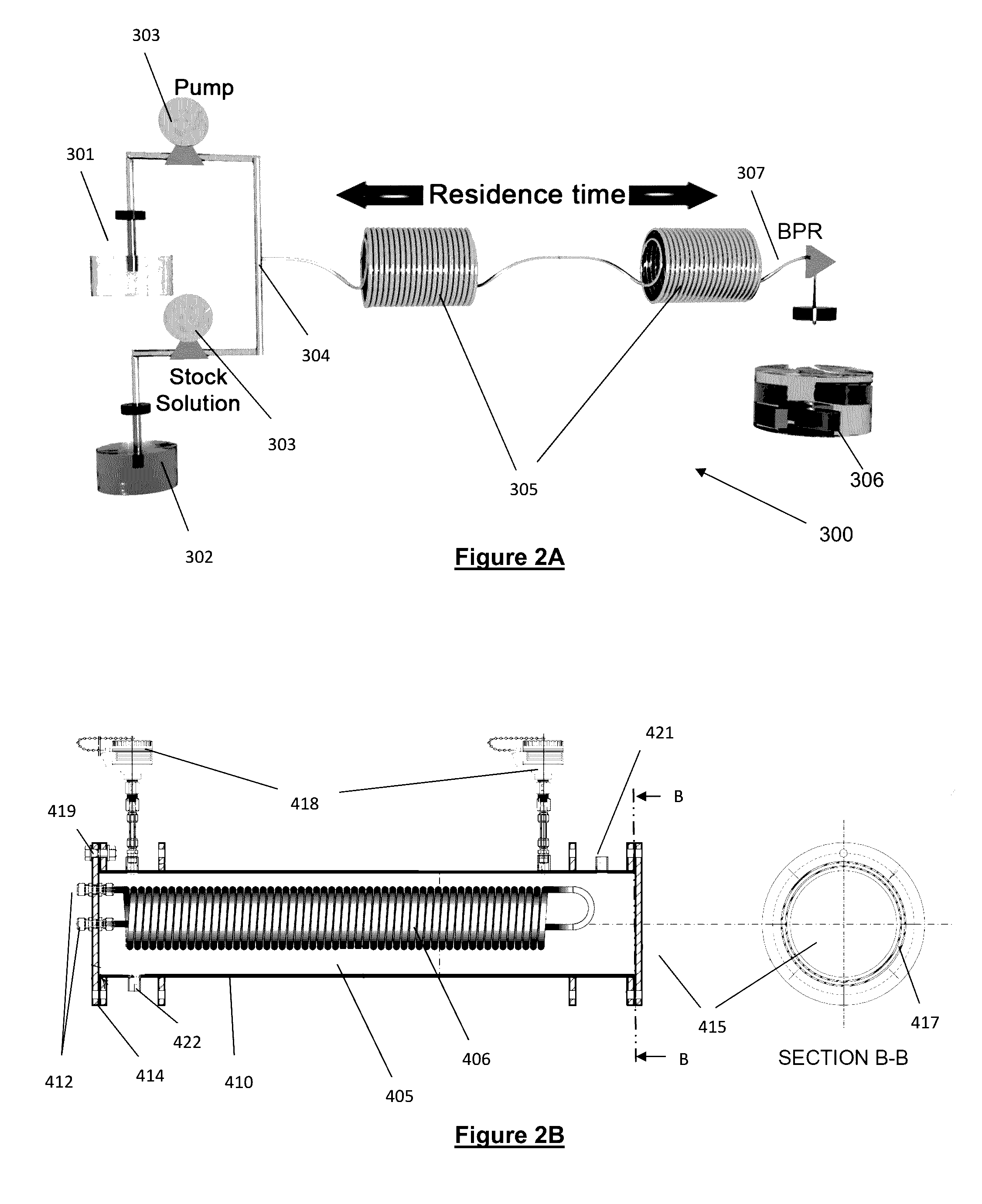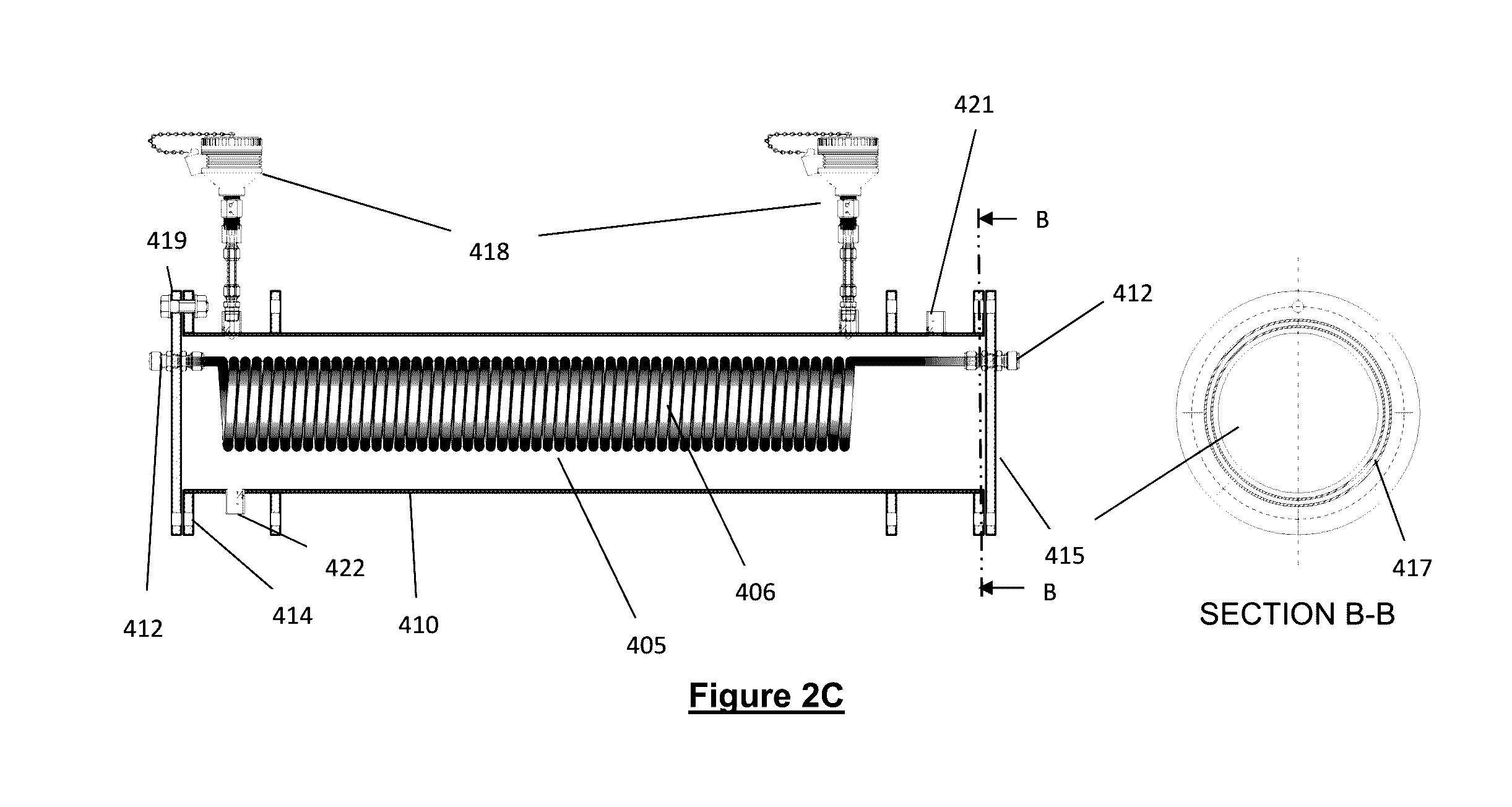Production of metal-organic frameworks
a technology of metalorganic frameworks and apparatuses, applied in the direction of organic compounds/hydrides/coordination complexes, physical/chemical process catalysts, other chemical processes, etc., can solve the problem of limiting the ability of these materials to make a significant impact on prospective markets or technologies, limiting the scale up of traditional laboratory routes such as the classical solvothermal synthesis, etc. problem, to achieve the effect of specific separation
- Summary
- Abstract
- Description
- Claims
- Application Information
AI Technical Summary
Benefits of technology
Problems solved by technology
Method used
Image
Examples
example 1
Synthesis of HKUST-1, UiO-66 and NOTT-400
[0110]To demonstrate the effectiveness and the versatility of this approach, three different families of MOFs have been synthesized: copper trimesate (HKUST-1), zirconium terephthalate (UiO-66) and scandium biphenyl-tetracarboxylate (NOTT-400). These three MOFs are thermally and chemically stable crystals which represent some of the most interesting materials for potential applications in gas storage and catalysis.
[0111]A schematic of the overall experimental apparatus is shown in FIG. 2A. The apparatus 300 and production method uses a commercially available flow chemistry synthesis platform (Vapourtec® R2+ / R4 see below) to simultaneous pump separate precursor solutions of the organic ligand 301 and the metallic salt 302 into a T-micro mixer 304 via HPLC pumps 303. The mixed solvent streams were combined and directed into reactor 305 which comprised coiled flow reactors consisting of one to four (in this case one) 1.0 mm ID perfluoroalkoxy po...
example 4
MOF Synthesis and Megasonic Separation
[0127]Aluminium fumarate (Al-fum) and aluminium terephthalate (MIL-53) were synthesized using flow chemistry technology following the methodology outlined in Example 1.
[0128]A schematic representation showing the general flow reactor setup used in this example is shown and described above in relation to FIG. 2A. The reactor 405 used in this setup is shown in FIG. 2B, and has been described in detail above.
[0129]Here after mixing in T-mixer 304, the organic ligand and metal ions in solution with a solvent, preferably water and / or mixture of water and ethanol, at temperature from about 25° C. to about 130° C. (depending of the MOF synthesis) are then directed into a heated tubular flow reactor 305 (FIG. 2A) and 405 (FIG. 2B). The specific coil flow reactor 405 (FIG. 2B) used in this application had a 108 mL capacity with 6.0 mm ID stainless steel tube with a total flow rate of 90 mL min−1. A MOF stream is obtained from the flow reactor 405 / 305 and...
example 5
Investigation into Changes in MOF Composition
[0140]In order to investigate whether megasonics separation introduces changes in the MOF composition, ζ-potential measurements were recorded after each washing step of Example 5 as shown Table 2.
TABLE 2ζ-Potential of the Al-Fumarate and MIL-53 MOF material aftereach wash step using Megasonics using water as a dispersant.MOF washing process (Megasonics)ζ-potential (mV)Al-Fumarate flow reactor +8.3 ± 0.4Al-Fumarate wash 1 in H2O +8.8 ± 0.0Al-Fumarate wash 2 in H2O +8.8 ± 0.1Al-Fumarate wash 3 in H2O +8.9 ± 0.2Al-Fumarate wash 4 in EtOH+10.6 ± 0.2Al-Fumarate wash 5 in EtOH+11.3 ± 0.8MIL-53 flow reactor+13.3 ± 0.4MIL-53 wash 1 in H2O+15.1 ± 0.5MIL-53 wash 2 in H2O+14.7 ± 0.3MIL-53 wash 3 in H2O+12.6 ± 0.5MIL-53 wash 4 in EtOH+12.7 ± 0.2MIL-53 wash 5 in EtOH+14.6 ± 0.1
[0141]No significant changes to the surface charge were observed, pointing to a separation that is based on reversible aggregation.
[0142]To determine the quality of the crystals...
PUM
| Property | Measurement | Unit |
|---|---|---|
| frequency | aaaaa | aaaaa |
| temperature | aaaaa | aaaaa |
| temperature | aaaaa | aaaaa |
Abstract
Description
Claims
Application Information
 Login to View More
Login to View More - R&D
- Intellectual Property
- Life Sciences
- Materials
- Tech Scout
- Unparalleled Data Quality
- Higher Quality Content
- 60% Fewer Hallucinations
Browse by: Latest US Patents, China's latest patents, Technical Efficacy Thesaurus, Application Domain, Technology Topic, Popular Technical Reports.
© 2025 PatSnap. All rights reserved.Legal|Privacy policy|Modern Slavery Act Transparency Statement|Sitemap|About US| Contact US: help@patsnap.com



